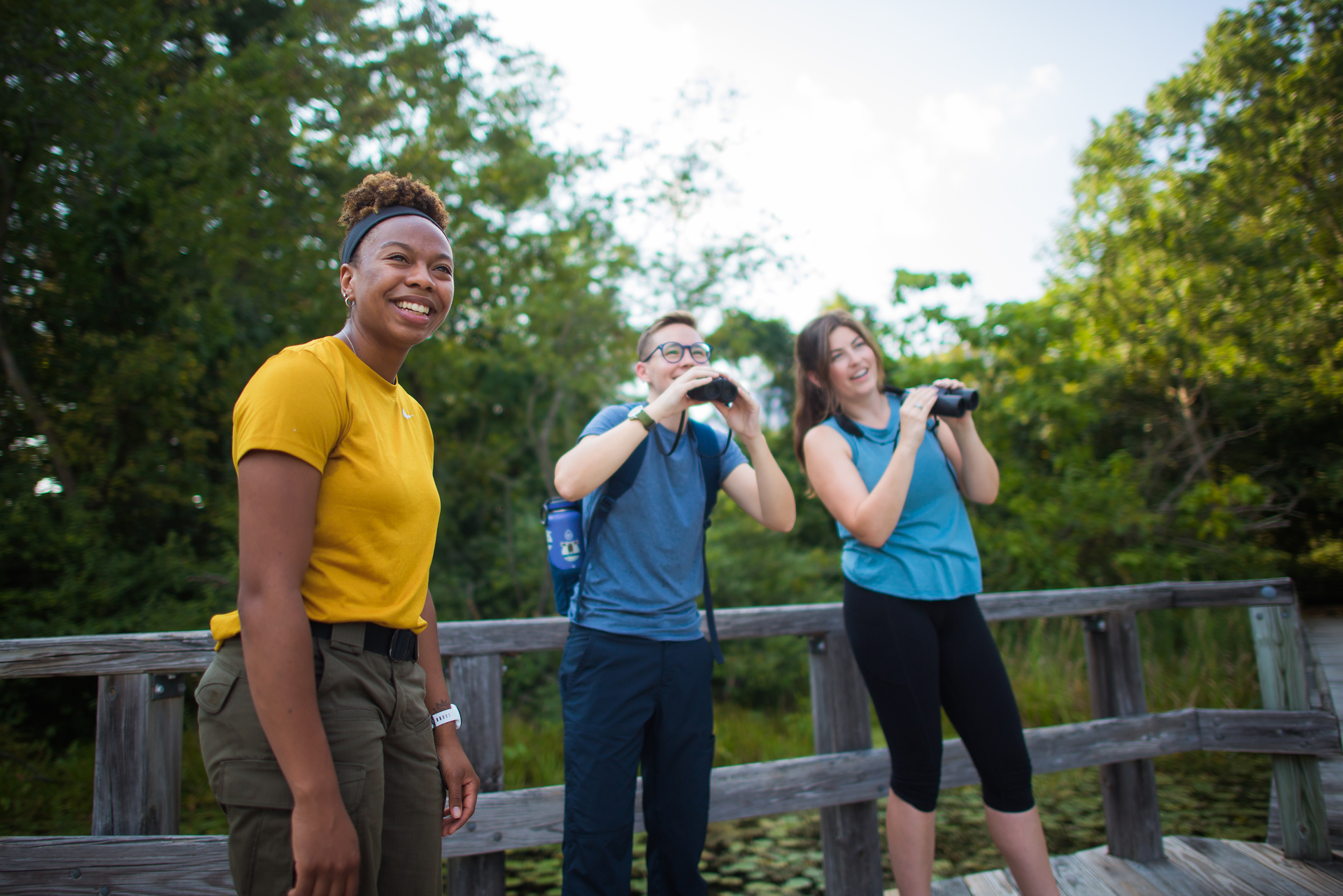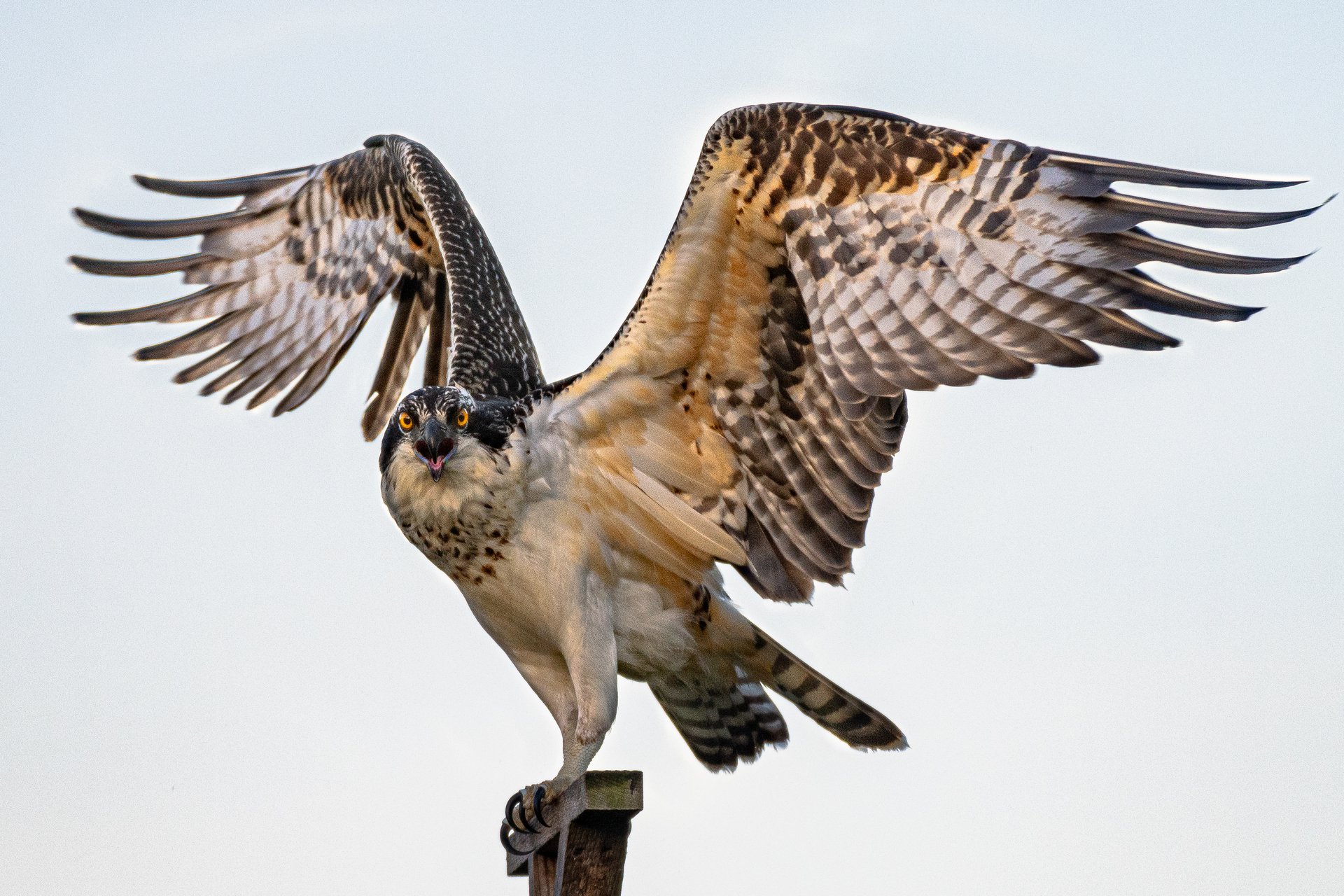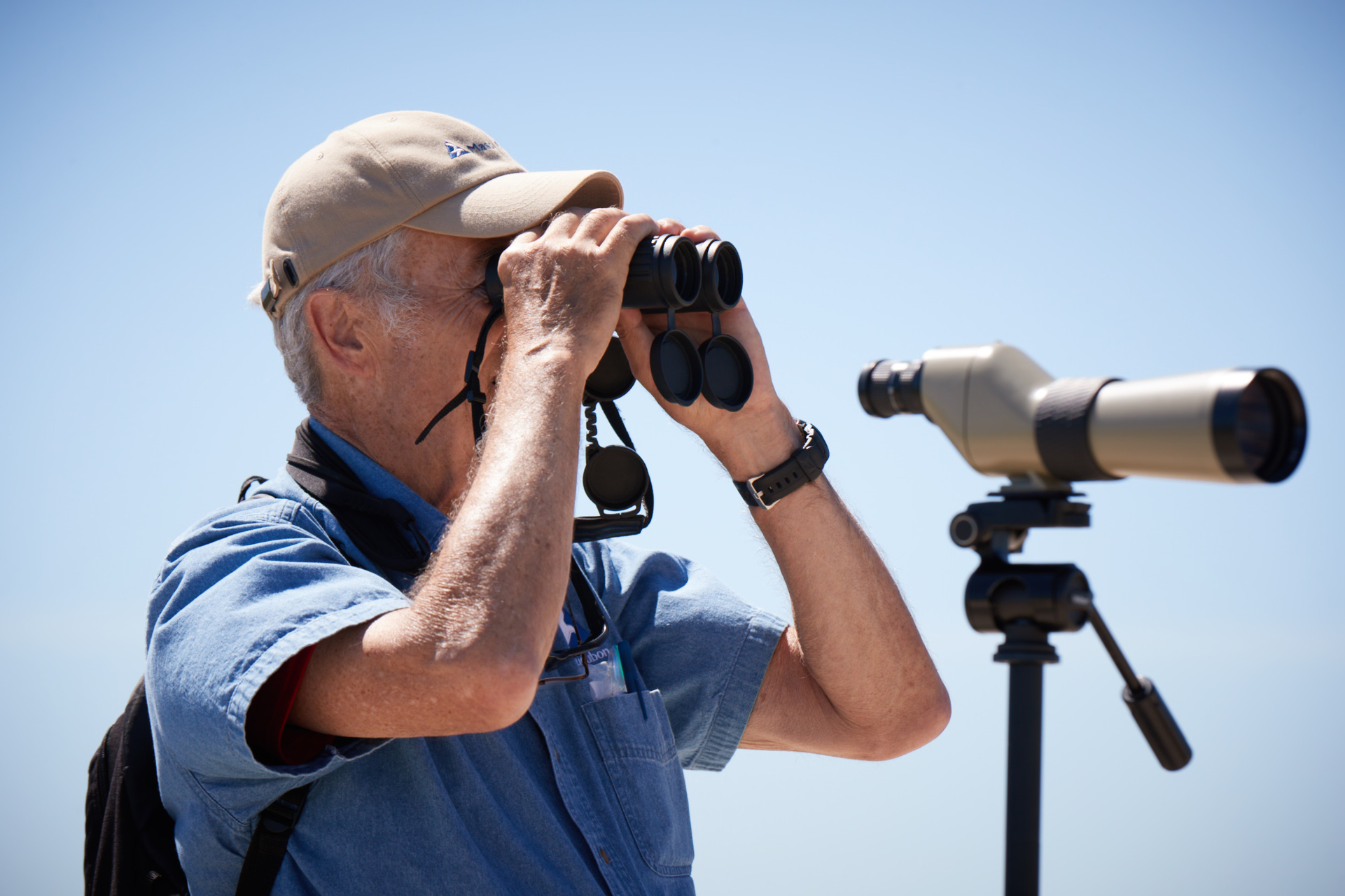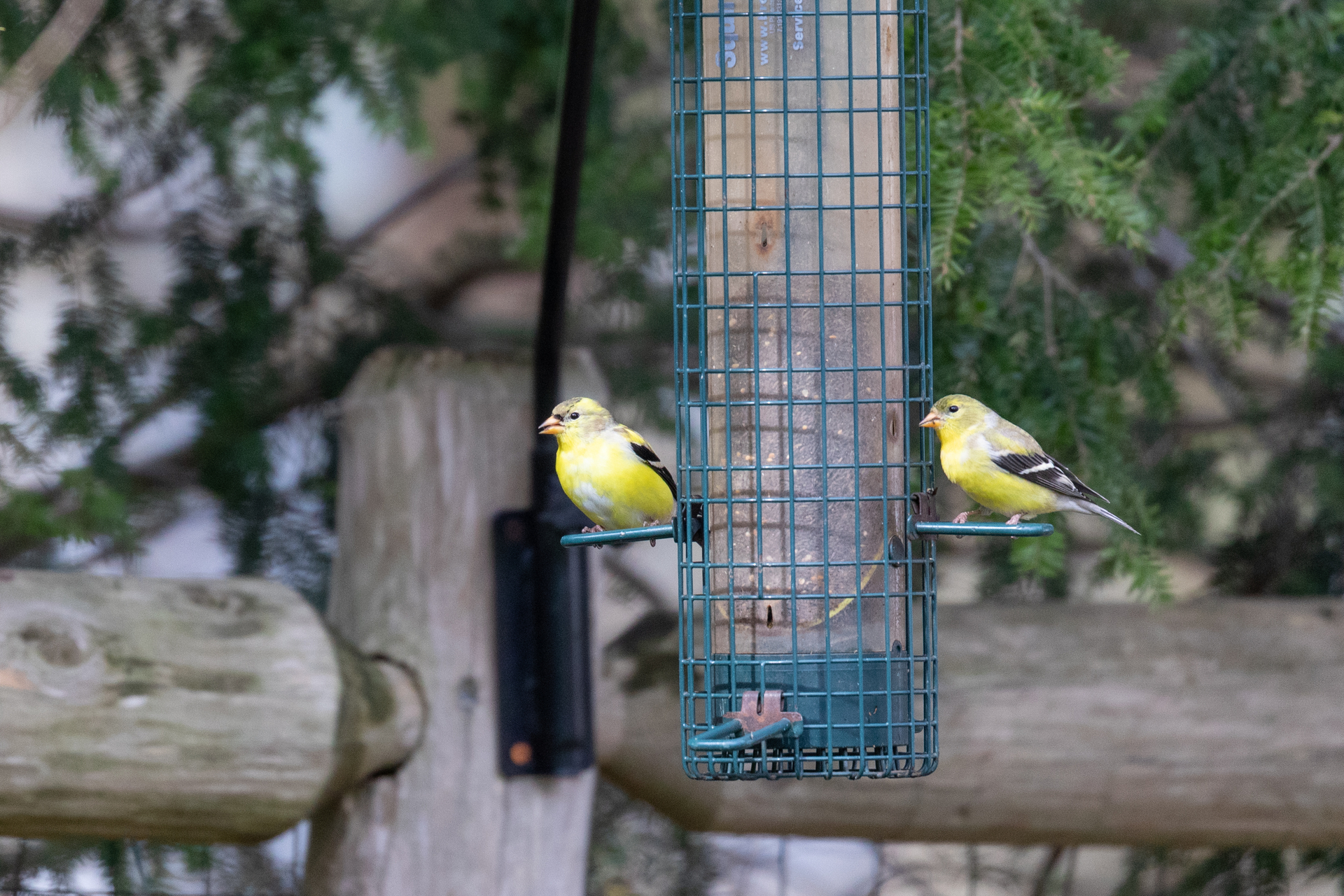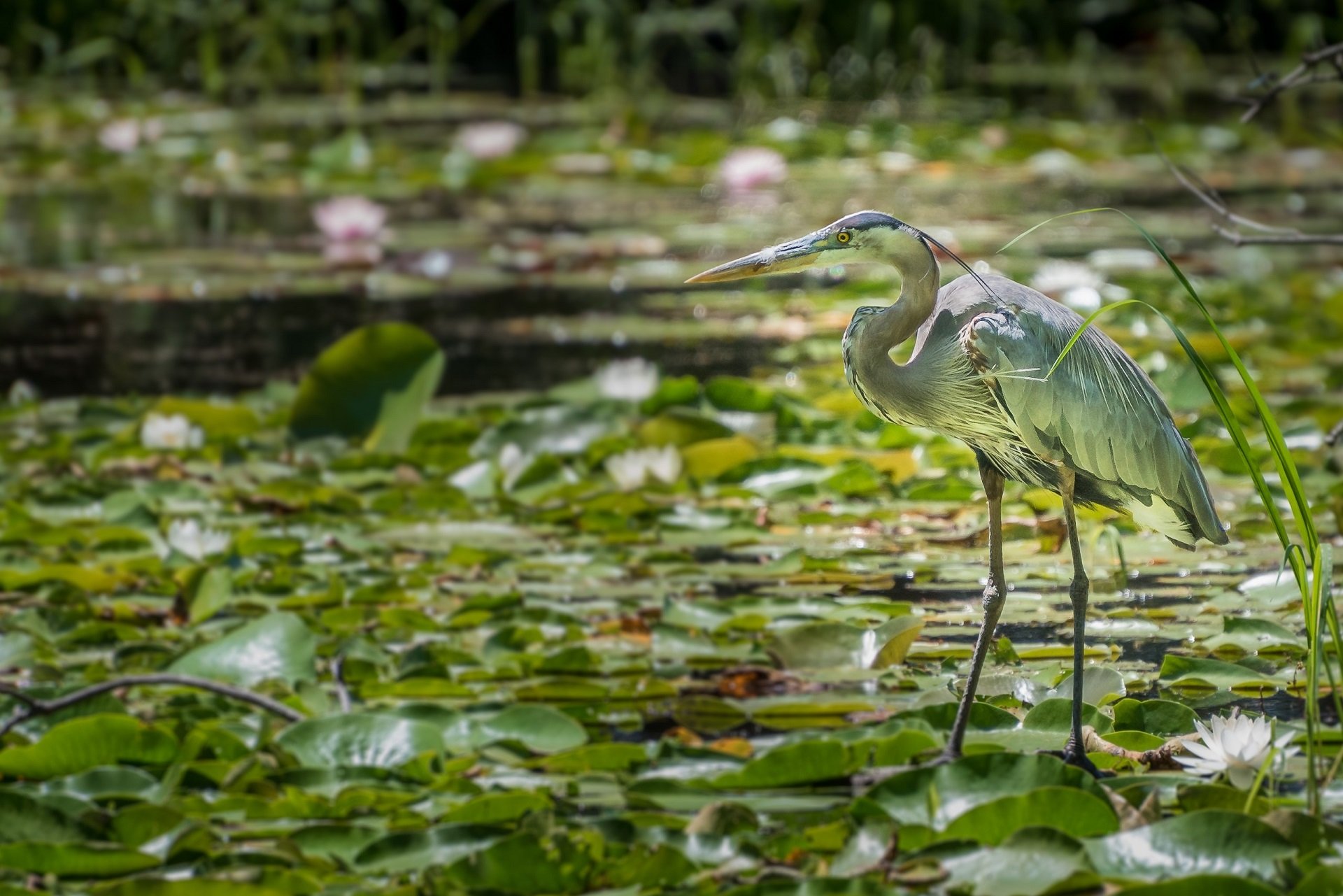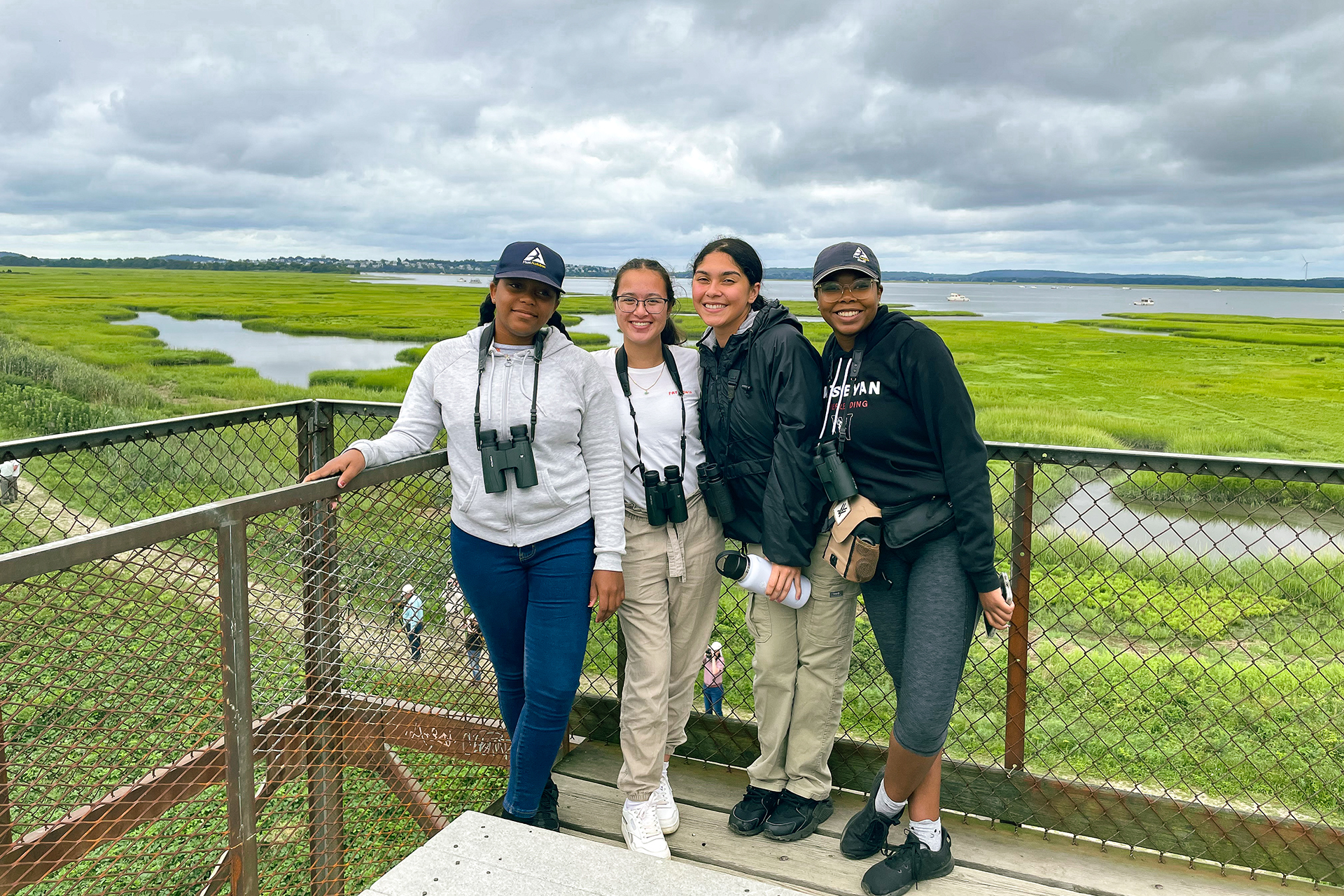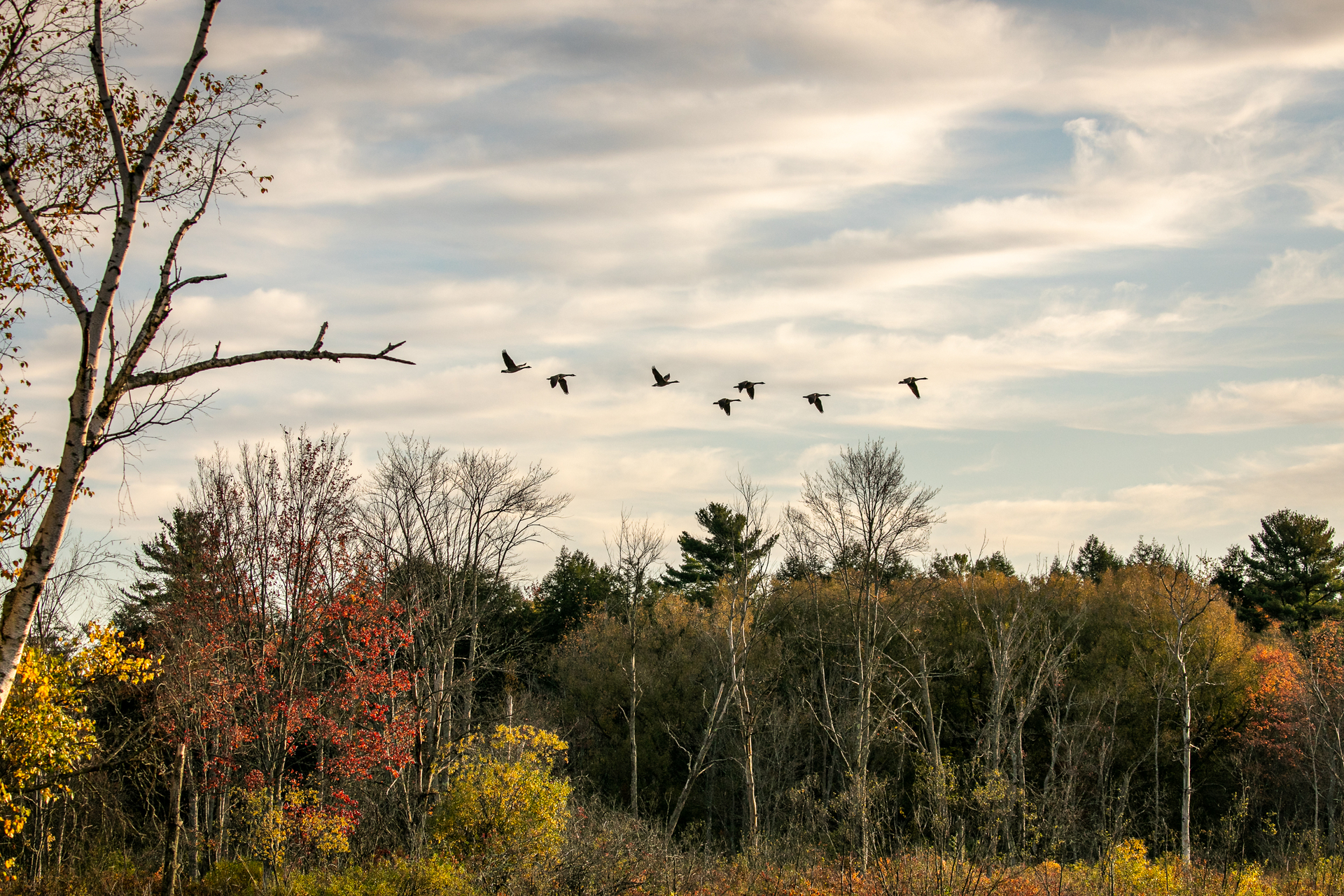Clever crows, brave pigeons, and swooping hawks: if you’ve started to notice the behaviors and personalities of the birds around you, there’s a whole world of feathered wonders waiting for you to explore. Bird watching, with its adaptable and accessible nature, is enjoyed by people of all ages and abilities.
This beginner birdwatching primer from the experts at Mass Audubon will tell you everything you need to get started on your new favorite hobby.
1. Learn the Basics of Bird Identification
Familiarize yourself with the key features used to identify birds and common birds found in Massachusetts. Observing subtle characteristics will be essential when distinguishing between commonly confused species.
Learn the Lingo: Get acquainted with the language birders use to describe body parts, like the crown (the top of the bird’s head), chin (the area just below the beak), and flanks (the side of the bird’s body, between the wings and tail).
Size and Shape: Note the bird's overall size and shape, including its body proportions, beak shape, and tail length.
Plumage: Pay attention to the bird's colors, patterns, and markings on its feathers. These can vary greatly between species, time of year, age, and even gender.
Behavior: Observe how the bird moves, feeds, flies, and interacts with its environment. Behavior can provide valuable clues for identification, like the curious nuthatch, known for descending trees, clinging to the bark, head-first.
Sounds: Some elusive birds are primarily recognized through their calls or songs. While they can be a challenge to tackle, familiarizing yourself with bird sounds can help identify a species when you can’t see them.
2. Equip Yourself with the Essentials
Before you embark on your birdwatching adventure, make sure you have the right tools. Thankfully, you don’t need expensive equipment or a hefty investment to get started. Many local libraries and Mass Audubon wildlife sanctuaries loan out the resources below.
Binoculars: Having the ability to see bird feathers and faces in more detail will help immensely with identification. In addition, you'll be able to watch birds from farther distances without scaring them away. A quality pair of binoculars is a birder’s best friend, so be sure to select the right pair and familiarize yourself with how to properly fit and focus them for optimal viewing.
Field Guides: A field guide specific to birds in your region is indispensable for identifying different species. Look for guides with illustrations, detailed descriptions, and range maps.
Recording Tools: Keep a notebook handy to jot down observations, sketches, and notes about the birds you encounter. Bird sightings can be quick flashes so focusing on key distinguishing features is paramount. Birding and art tend to go hand in hand, so a personally drawn sketch can be a wonderful way to track your sightings. Alternatively, apps like Merlin or the Audubon app can help with identification, tracking, and noting from your phone.
3. Start Birdwatching in Your Neighborhood
You don't have to travel far to get started. Your backyard or local park can be excellent places to observe a variety of bird species. Early mornings and dusk are when birds are typically most active, and therefore the best time to go searching. To attract the birds to you, there are a few things you can do as well.
Set Up a Feeder: Bird feeders attract a diverse range of birds to your backyard, providing you with ample opportunities for observation. Specific feeder types and seeds attract specific species, so get to know some bird feeding best practices first. Hummingbirds love nectar feeders, while orioles love fresh fruit. Finches dine on nyjer seed, sparrows are partial to safflower, and woodpeckers will visit fatty suet cages.
Create Habitat: Healthy habitats breed healthy bird life. Birds need native trees, shrubs, and flowers for food and shelter, in addition to clean water sources. There are many things you can do to foster healthy habitats near you.
4. Visit Birding Hotspots
Birding hotspots are areas that birds are routinely attracted to. They may contain reliable food sources or be ideal for resting along their path of migration.
Wildlife Sanctuaries: Mass Audubon's 60+ wildlife sanctuaries provide habitat for a wide variety of species. For elegant Great Blue Herons, check out the rookeries (communal nests) at Ipswich River, Rocky Hill, and Tracy Brook. Fish-hunting Ospreys can be seen scouting from their nest platforms at North River, Daniel Webster, and Allens Pond. At coastal sanctuaries like Long Pasture, Felix Neck, and Wellfleet Bay, tiny Piping Plovers run along the beaches chasing waves. From meadow-prone bobolinks to tree-dwelling owls, and every habitat in between, visiting wildlife sanctuary hotspots is worth the journey.
Migration Routes: During spring and fall migration seasons, birds travel along established routes. Head to locations along these routes for seasonal birdwatching opportunities.
5. Join Birdwatching Programs & Connect with Other Birders
Level up your self-directed journey by attending programs and meeting seasoned birders.
Birding Programs: Mass Audubon's robust catalog of weekly bird walks and topic-specific deep dives are wonderful opportunities to learn more from experts and meet others with similar interests. Find out how to identify birds by their calls, interpret curious behavior, and observe fascinating avian phenomenon that only happens once or twice a year!
Online Birding Communities: Follow Mass Audubon on Facebook, Instagram, or TikTok to find out what’s new in the world of birding. Connect with fellow bird enthusiasts to learn from their experiences and share your own.
6. Respect The Birds & Their Habitats
Never forget to prioritize the well-being of the birds and their habitats. As a birder, your keen eye and understanding of their place within delicate ecosystems will become vital to their longstanding health and continued impact on the world.
Observe from a Distance: Use binoculars and scopes to observe birds from a distance without disturbing them.
Leave No Trace: Practice "Leave No Trace" principles by minimizing your impact on the environment and respecting wildlife habitats.
Birding Code of Ethics: Be sure to review our birding code of ethics to ensure you're keeping the birds' wellbeing in mind.
Support Bird Conservation: Mass Audubon maintains the most comprehensive public database of bird distribution, abundance, and trend information for the Commonwealth—a resource that's used by conservation partners and concerned citizens alike. Familiarize yourself with birds that need our support, and how you can get involved.
7. Practice and Have Fun!
As a beginner, you may occasionally get an identification wrong or miss a species you were hoping to see—but don’t worry! Like all hobbies, practice makes perfect. The most important thing is that you enjoy yourself, respect the birds, and make a genuine connection with the avian life around you. Happy birding!
Upcoming Bird Programs
See MoreWinter Finch Walk with Manomet Conservation Sciences
-
Tidmarsh Wildlife Sanctuary, Plymouth
-
Thursday, January 8
9:00-10:30am
Adults
Rescue Raptors from Rodenticides
-
Online
-
Thursday, January 8
7:00-8:00pm
Adults & Families - 12 - 17
Friday Morning Birdwatching
-
Parker River National Wildlife Refuge, Newburyport
-
Friday, January 9
8:30-11:30am
Adults
Owl Prowl
-
Wellfleet Bay Wildlife Sanctuary, South Wellfleet
-
Friday, January 9
4:00-5:30pm
Adults & Families - 10 - 17
Winter Owl Prowl
-
Museum of American Bird Art Education Center, Canton
-
Friday, January 9
5:00-6:30pm
Families - children 5 - 17
Fish Feeding Fun and Story Time
-
Wellfleet Bay Wildlife Sanctuary, South Wellfleet
-
Saturday, January 10
11:30am-12:30pm
Adults & Families - 2 - 17
Stay Connected
Don't miss a beat on all the ways you can get outdoors, celebrate nature, and get involved.



